-
 Bitcoin
Bitcoin $117600
0.25% -
 Ethereum
Ethereum $4424
0.10% -
 XRP
XRP $3.101
0.50% -
 Tether USDt
Tether USDt $1.001
-0.01% -
 BNB
BNB $836.2
1.26% -
 Solana
Solana $188.8
2.11% -
 USDC
USDC $1.000
0.01% -
 Dogecoin
Dogecoin $0.2301
0.57% -
 TRON
TRON $0.3485
-1.00% -
 Cardano
Cardano $0.9209
-1.34% -
 Hyperliquid
Hyperliquid $46.72
-1.19% -
 Chainlink
Chainlink $22.62
4.84% -
 Stellar
Stellar $0.4275
-0.38% -
 Sui
Sui $3.761
1.91% -
 Bitcoin Cash
Bitcoin Cash $586.7
-0.25% -
 Ethena USDe
Ethena USDe $1.001
0.01% -
 Hedera
Hedera $0.2510
2.06% -
 Avalanche
Avalanche $24.21
2.22% -
 Litecoin
Litecoin $119.7
1.07% -
 Toncoin
Toncoin $3.450
1.06% -
 UNUS SED LEO
UNUS SED LEO $9.411
-0.93% -
 Shiba Inu
Shiba Inu $0.00001298
1.20% -
 Uniswap
Uniswap $10.98
3.25% -
 Polkadot
Polkadot $3.961
2.16% -
 Dai
Dai $1.000
0.00% -
 Bitget Token
Bitget Token $4.642
0.95% -
 Cronos
Cronos $0.1514
0.57% -
 Ethena
Ethena $0.7290
3.78% -
 Monero
Monero $254.1
7.69% -
 Pepe
Pepe $0.00001102
2.47%
How to set the slippage tolerance of transactions in OKX wallet?
OKX Wallet doesn't offer direct slippage tolerance; instead, users control it implicitly via limit or stop-limit orders, specifying a price that acts as their acceptable slippage. This price limit determines whether the order executes.
Mar 22, 2025 at 04:08 pm
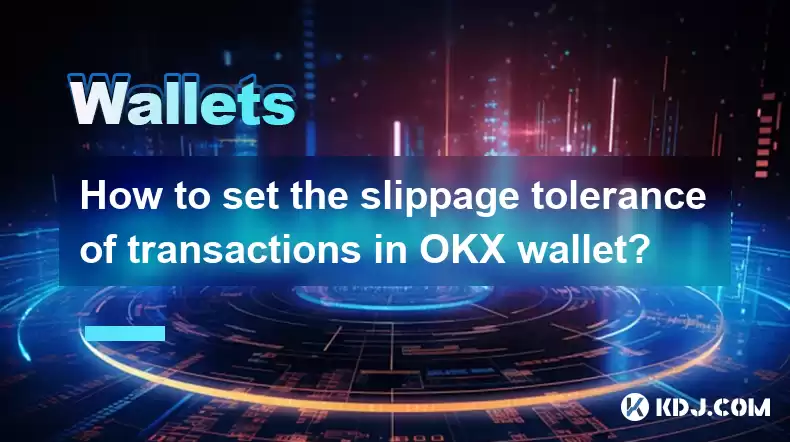
Key Points:
- Understanding Slippage in Cryptocurrency Transactions
- Locating Slippage Tolerance Settings within the OKX Wallet
- Adjusting Slippage Tolerance for Different Trading Strategies
- Impact of Slippage Tolerance on Transaction Success Rates
- Advanced Considerations for Slippage Management
How to Set the Slippage Tolerance of Transactions in OKX Wallet?
Slippage is a common phenomenon in cryptocurrency trading, representing the difference between the expected price of a transaction and the actual execution price. Understanding and managing slippage is crucial for successful trading, particularly in volatile markets. OKX Wallet, like many other cryptocurrency exchanges, allows users to define a slippage tolerance to mitigate the risk of unfavorable price movements during order execution. This article details how to set and manage slippage tolerance within the OKX Wallet.
First, it’s essential to grasp what slippage is. Imagine you want to buy 1 BTC at $30,000. Due to market fluctuations, the price might slightly increase by the time your order is processed. This price difference is slippage. High slippage can lead to significant losses, especially with large orders or during periods of high volatility.
The OKX Wallet interface doesn't directly display a "slippage tolerance" setting in a single, easily identifiable field. Instead, slippage tolerance is implicitly managed within the order placement process itself. You don't set a percentage; you set a price limit. This limit acts as your implicit slippage tolerance.
To effectively control slippage, you need to understand how to place limit orders and stop-limit orders. These order types allow you to specify the maximum price you're willing to pay (buy order) or the minimum price you're willing to sell at (sell order). This maximum or minimum price acts as your implicit slippage tolerance. If the market price moves beyond your specified limit, your order will not be executed.
Here's how to place a limit order (which inherently sets your slippage tolerance) within the OKX Wallet:
- Navigate to the trading interface: Locate the trading section within your OKX Wallet.
- Select the trading pair: Choose the cryptocurrency pair you wish to trade (e.g., BTC/USDT).
- Specify the order type: Select "Limit" as the order type.
- Enter the price and quantity: Input the price at which you're willing to buy or sell, and the quantity of cryptocurrency. This price is your implicit slippage tolerance. Any price beyond this will result in your order not being filled.
- Place the order: Review your order details and confirm to submit.
The same principle applies to stop-limit orders, offering an additional layer of protection against unfavorable price movements. A stop-limit order will only be executed if the market price reaches a specified stop price, but only at or better than the limit price you set.
Understanding how to effectively use limit orders and stop-limit orders is key to managing your slippage tolerance. Experimenting with different price limits within your trading strategy will help you find the balance between ensuring order execution and minimizing the impact of slippage. Higher limit prices (for buy orders) or lower limit prices (for sell orders) represent a lower tolerance for slippage, but increase the risk of your order not being filled. Conversely, wider tolerances increase the likelihood of order fulfillment but potentially at less favorable prices.
Consider factors like market volatility when setting your implicit slippage tolerance. During highly volatile periods, setting a tighter limit might result in your order not being filled. Conversely, during periods of low volatility, you can set a tighter limit to minimize slippage. Remember, there's no one-size-fits-all solution.
Common Questions:
Q: What happens if my order doesn't execute due to slippage?
A: If the market price moves beyond the limit price you specified (your implicit slippage tolerance), your order will remain unfilled. You'll need to either cancel the order or modify it with a wider price range.
Q: Can I set a percentage-based slippage tolerance in OKX Wallet?
A: No, OKX Wallet does not offer a direct percentage-based slippage tolerance setting. The slippage tolerance is implicitly defined by the price limit you set when placing limit or stop-limit orders.
Q: How does slippage affect my profits?
A: Slippage can reduce your profits or even lead to losses, especially in volatile markets or with large trade volumes. The greater the slippage, the further the execution price deviates from your expected price, impacting your overall return.
Q: What is the best way to minimize slippage?
A: Minimizing slippage involves placing orders during periods of low volatility, using limit orders, setting reasonable price limits (your implicit slippage tolerance), and potentially breaking down large orders into smaller ones.
Q: Is there a way to predict slippage?
A: Predicting slippage with complete accuracy is impossible due to the inherent volatility of cryptocurrency markets. However, you can monitor market depth and order books to get a better sense of potential slippage before placing an order. Analyzing historical price movements and volatility can also provide insights.
Q: What's the difference between a limit order and a market order regarding slippage?
A: Market orders execute immediately at the best available price, making them highly susceptible to slippage, especially during periods of high volatility. Limit orders, on the other hand, only execute at your specified price or better, giving you more control over slippage but potentially resulting in unfilled orders.
Disclaimer:info@kdj.com
The information provided is not trading advice. kdj.com does not assume any responsibility for any investments made based on the information provided in this article. Cryptocurrencies are highly volatile and it is highly recommended that you invest with caution after thorough research!
If you believe that the content used on this website infringes your copyright, please contact us immediately (info@kdj.com) and we will delete it promptly.
- Kazakhstan's Crypto Leap: Bitcoin ETF and Central Asia's Digital Finance Future
- 2025-08-13 12:45:19
- BlockDAG Presale Blazes Past $371M: Fundraising Frenzy Fuels Crypto Sensation
- 2025-08-13 13:05:21
- Meme Coins: Chasing the 2025 Surge – Which Will Moonshot?
- 2025-08-13 10:25:23
- Bitcoin's Wild Ride: Rally, Pullback, and What's Next
- 2025-08-13 10:25:23
- Bitcoin, Bitmax, and Institutional Demand: A New Era of Crypto Investment
- 2025-08-13 10:45:12
- Solana, ROAM, and Airdrops: What's the Buzz in 2025?
- 2025-08-13 11:35:13
Related knowledge
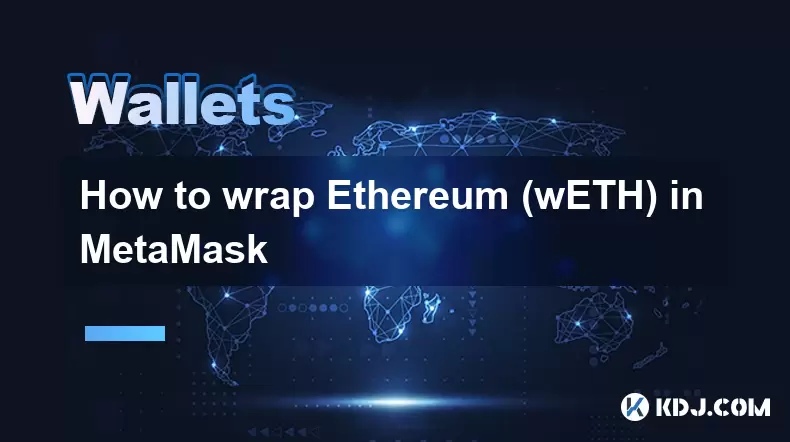
How to wrap Ethereum (wETH) in MetaMask
Aug 13,2025 at 11:36am
Understanding Wrapped Ethereum (wETH)Wrapped Ethereum (wETH) is a tokenized version of native Ethereum (ETH) that conforms to the ERC-20 standard, ena...

How to manage your portfolio in Exodus wallet
Aug 08,2025 at 10:07pm
Understanding the Exodus Wallet InterfaceThe Exodus wallet is a non-custodial cryptocurrency wallet that supports a wide range of digital assets. When...
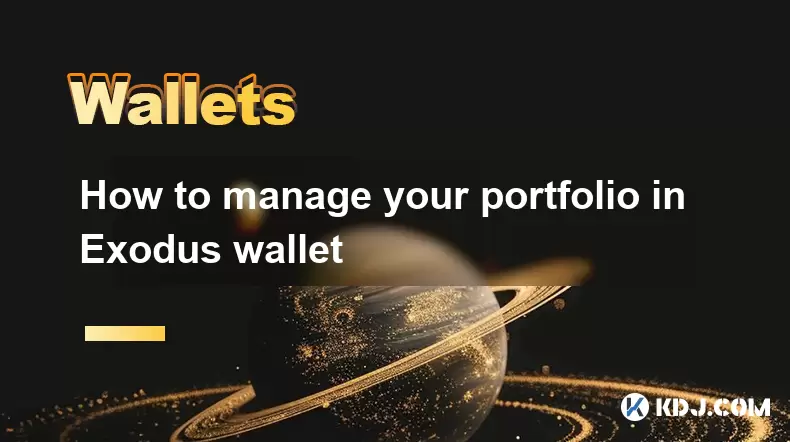
How to manage your portfolio in Exodus wallet
Aug 13,2025 at 11:35am
Understanding the Exodus Wallet InterfaceThe Exodus wallet is a non-custodial cryptocurrency wallet that supports a wide range of digital assets. Upon...

How to reset your MetaMask password
Aug 08,2025 at 01:28pm
Understanding the MetaMask Password Reset ProcessMany users confuse the MetaMask password with the seed phrase or private key, but they serve differen...
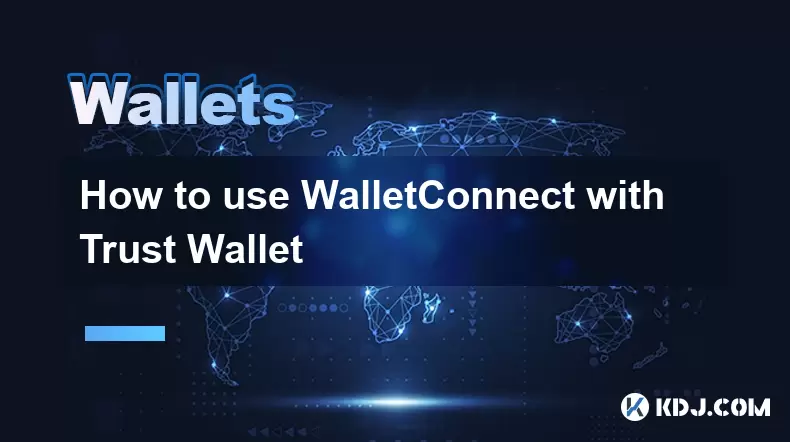
How to use WalletConnect with Trust Wallet
Aug 13,2025 at 01:07am
What Is WalletConnect and Why It Matters for Trust Wallet UsersWalletConnect is an open-source protocol that enables secure communication between dece...
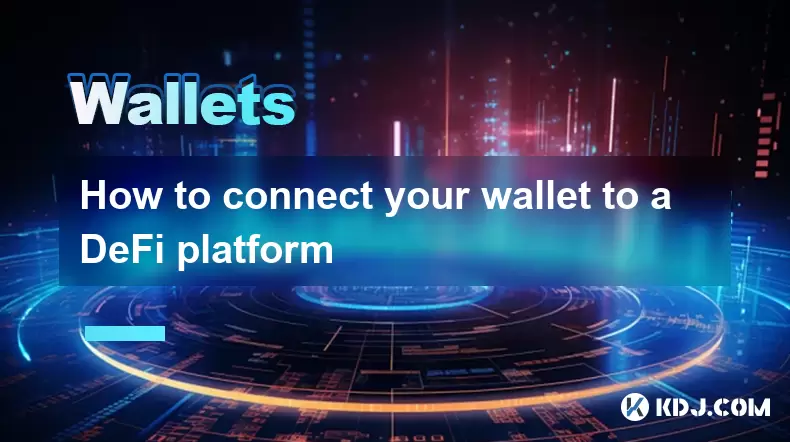
How to connect your wallet to a DeFi platform
Aug 13,2025 at 11:36am
Understanding Wallet Compatibility with DeFi PlatformsBefore connecting your wallet to any DeFi platform, it's essential to ensure your wallet is comp...

How to wrap Ethereum (wETH) in MetaMask
Aug 13,2025 at 11:36am
Understanding Wrapped Ethereum (wETH)Wrapped Ethereum (wETH) is a tokenized version of native Ethereum (ETH) that conforms to the ERC-20 standard, ena...

How to manage your portfolio in Exodus wallet
Aug 08,2025 at 10:07pm
Understanding the Exodus Wallet InterfaceThe Exodus wallet is a non-custodial cryptocurrency wallet that supports a wide range of digital assets. When...

How to manage your portfolio in Exodus wallet
Aug 13,2025 at 11:35am
Understanding the Exodus Wallet InterfaceThe Exodus wallet is a non-custodial cryptocurrency wallet that supports a wide range of digital assets. Upon...

How to reset your MetaMask password
Aug 08,2025 at 01:28pm
Understanding the MetaMask Password Reset ProcessMany users confuse the MetaMask password with the seed phrase or private key, but they serve differen...

How to use WalletConnect with Trust Wallet
Aug 13,2025 at 01:07am
What Is WalletConnect and Why It Matters for Trust Wallet UsersWalletConnect is an open-source protocol that enables secure communication between dece...

How to connect your wallet to a DeFi platform
Aug 13,2025 at 11:36am
Understanding Wallet Compatibility with DeFi PlatformsBefore connecting your wallet to any DeFi platform, it's essential to ensure your wallet is comp...
See all articles

























































































